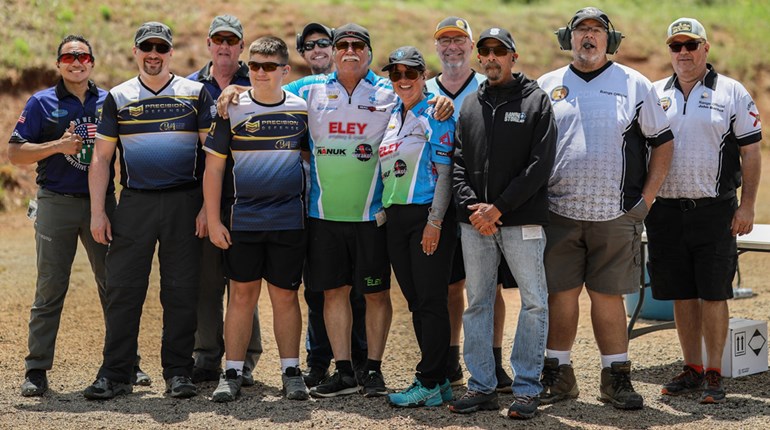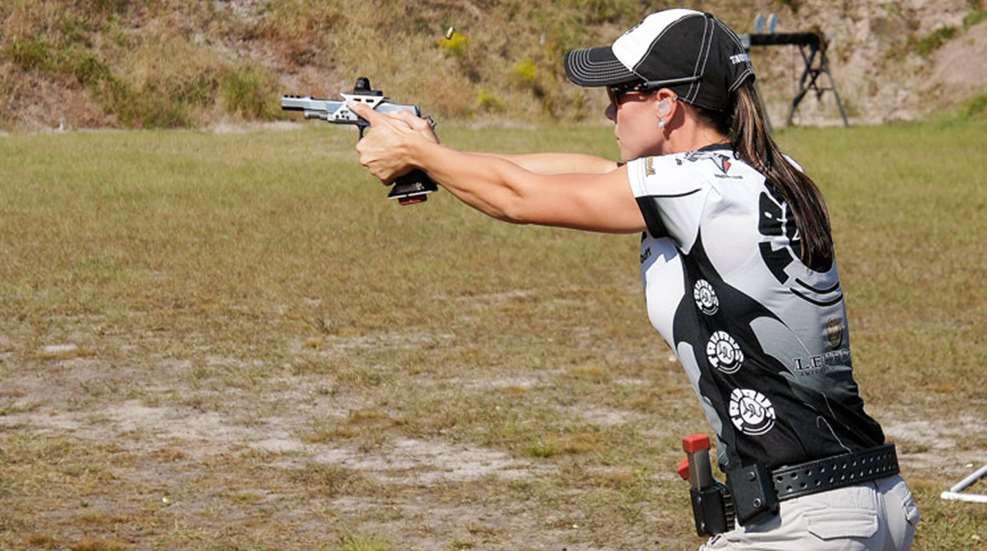
Gun sales have been booming for years now, and the vast majority of that growth has been outside of the “old-school” market for hunting rifles. The firearms people are buying are designed primarily for concealed carry and self-defense, guns like Smith & Wesson M&Ps, Glocks and AR-15-pattern rifles. People buy these guns, they get their carry permit, they go to the range a few times and for most of them, that’s it. But some want more than just shooting on a static range. They want something to challenge their skills and give them a reason to improve as a shooter. If that sounds like you, if you like the idea of doing more than standing still in a range booth blasting away, allow me to introduce you to the wild, entertaining and often expensive world of competitive shooting.
The idea of marksmanship competition is nothing new. We have historical records of musketeers competing to see who could be the most accurate or who could fire the most shots in a minute. Go back before firearms, and archers would have formal and informal competitions, as well. I’d be willing to bet after the first caveman figured out how to make a spear and throw it, the first thing he did (after killing dinner) was to go get another caveman and see who could throw their spear farther or into the smallest target. We compete—it’s just what people are wired to do.
Luckily, there are a ton of different shooting competitions out there, and most of them have a place where you can use your stock, out-of-the-box gun to play. The oldest and simplest form of competitive shooting is the traditional bullseye match, which has been around forever and is relatively easy to get into, especially if you have a .22 LR pistol. We’ll skip over bullseye for the most part and focus on what are commonly referred to as “action-shooting” or “practical-shooting” sports. While fun and demanding, bullseye is not particularly useful as training for defensive scenarios.
In broad terms, action-shooting sports all share common characteristics: they use guns chambered in service calibers such as 9 mm and larger, they include movement from position to position, involve drawing from a holster and generally are broken down in individual stages, which comprise the match. Under the large umbrella of action shooting are different sanctioning bodies, all with their own rules, idiosyncrasies, proponents, detractors and championships. The two largest practical-shooting sports are sanctioned by the United States Practical Shooting Association (USPSA) and the International Defensive Pistol Association (IDPA). Other action-shooting sports include the International Confederation of Revolver Enthusiasts (ICORE), the Single Action Shooting Society (SASS) and 3-gun. The most recently created, 3-gun can be further broken down, because it has multiple sanctioning bodies of its own, the largest and best known being 3-Gun Nation. With all the different rules and organizations, it might be a little daunting trying to figure out which game is the best fit for you. Well, we’re here to help.
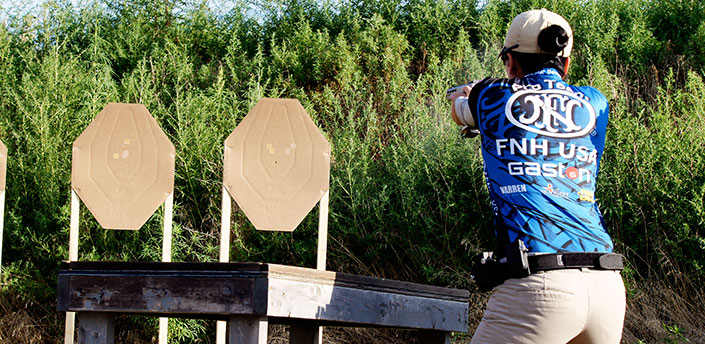
USPSA
USPSA can trace its roots back to Col. Jeff Cooper and the Modern Technique. Cooper was one of the founding fathers of the International Practical Shooting Confederation (IPSC), back when Pangaea was still splitting into the continents we know today. The original intent for IPSC, as envisioned by its founding fathers, was to create a competition where service-caliber firearms could be used “on the clock” to simulate practical applications of defensive-shooting skills. As IPSC grew and became a truly international organization, the need for a strictly American chapter was recognized, so in 1984 USPSA became the official U.S. chapter of IPSC.
Today, USPSA has approximately 25,000 members and holds national championships each year attended by hundreds of shooters. There is a misapprehension that getting started in USPSA is difficult or that there’s a high bar to entry. That’s not true. In fact, all you need to start is a handgun chambered in 9 mm or larger, three to five magazines depending on your pistol’s capacity, a holster, a belt and magazine pouches.
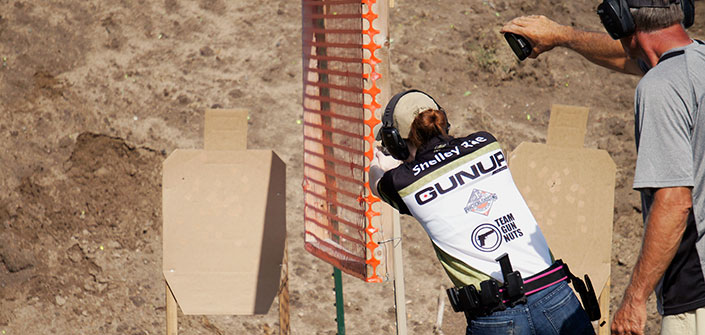
USPSA’s most-popular division is unsurprisingly the division with the lowest bar for entry. All matches are separated by equipment categories:
Open Division: The Formula 1 of shooting. Extremely customized handguns featuring red-dot sights, compensators, flared magazine wells and 30-round magazines. Fun to watch and shoot, but expensive.
Limited Division: Similar to open, but the big difference is no compensators and no red-dot sights. Traditional iron-sighted guns play here. The most-common gun is a double-stack, 1911-style pistol chambered in .40 S&W.
Limited-10 Division: Exactly the same as Limited, but with a magazine capacity cap of 10 rounds. This division was created during the so-called “assault-weapons ban.”
Production Division: This is where Smith & Wesson M&Ps, Glocks, Heckler & Kochs, SIG Sauers and most of the common “service” pistols can come and play. The most common caliber is 9 mm, but if you want to shoot your Glock G22, you can.
Single-Stack Division: Welcome to the USPSA home for 1911s.
Revolver Division: As the name indicates, this is where revolvers shoot.
Carry Optics: In 2015, USPSA announced it would add a new division to address the growing number of people who carry pistols that have slide-mounted red-dot sights. Currently a provisional division, USPSA is evaluating participation through 2016 to see if it should become a permanent addition.
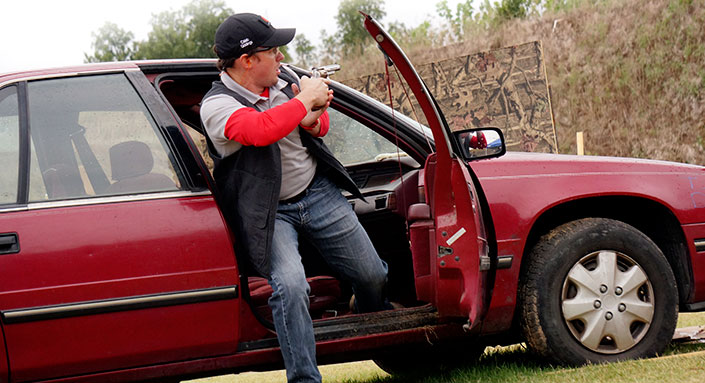
USPSA stages typically involve 10 to 32 rounds, and generally involve lots of movement from shooting position to shooting position. The biggest benefit to shooting USPSA from a concealed-carry and self-defense standpoint is it encourages thinking with a gun in your hand. You’re presented with a complex shooting problem and tasked with solving it on your own, all while under the pressure of the clock.
IDPA
The International Defensive Pistol Association was created in response to the perception that USPSA had drifted too far from its roots as a sport for using practical gear in practical circumstances. It does not allow race guns, and requires matches to be shot using a concealment garment to simulate everyday concealed carry. It is still a game, and a fun one at that, but it attempts to keep scenarios closer to what might be experienced by an armed citizen in a defensive scenario. The average stage length for an IDPA stage is 12 rounds, and the maximum round count allowed in a stage is 18.
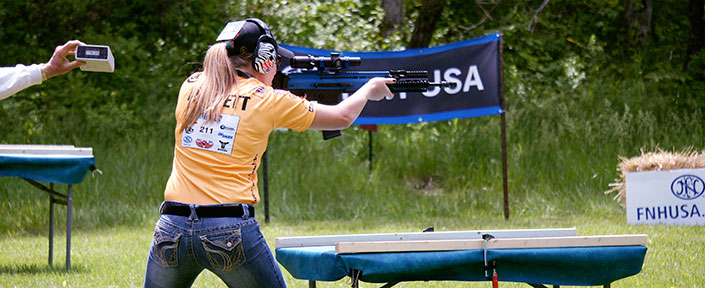
In 2015, IDPA reorganized its divisions to reflect trends observed in the shooting sports. The current IDPA divisions are:
Custom Defensive Pistol: any semi-automatic pistol chambered in .45 ACP, pretty much. Dominated of course by 1911s, but you will frequently see Glocks and M&Ps chambered in .45 ACP here.
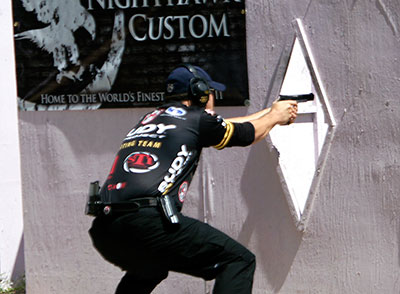
Enhanced Service Pistol: The closest thing IDPA gets to a race-gun division would be ESP. Originally intended to give a home to the Browning Hi Power, today ESP shooters run a lot of double-stack 1911-style pistols chambered in 9 mm. Because this division allows magazine extended wells, you’ll also see hot-rod Glocks and M&Ps here.
Stock Service Pistol: Here is IDPA’s “standard” division. Glock G17s, M&P Pros, Springfield Armory XDs and XD(M)s, Beretta 92s and the like all find their home in SSP. This division has the most restrictive rules on modifications done to stock handguns, and often involves the fiercest competition.
Revolver: Again, a place for revolver shooters to play. IDPA actually has a small—but dedicated—corps of revolver shooters who keep this division alive.
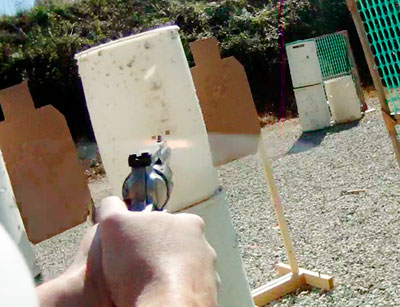
Concealed Carry Pistol: New in 2015, IDPA added a division to more closely reflect the pistols people actually carry. Restricted to handguns that are Glock G19-size and smaller, CCP attempts to correct the criticism that IDPA had begun to lose its way and become too much of a game.
Back-Up Gun: Lastly, the IDPA division for little guns. These must be .380 ACP at a minimum, can only be loaded to six rounds and the size restrictions guarantee that pistols used will be subcompacts and smaller.
IDPA is a great place to start if you’re curious about the shooting sports and want to have some fun. The stages are much more scripted than a USPSA stage, meaning shooters are frequently directed on which order to move through the stage. That being said, you still have to move fast and shoot accurately if you want to do well. Many shooters get started in IDPA, and will then progress to other shooting sports.
3-Gun
It can be pretty easy to get deep in the weeds discussing 3-gun, so we’ll keep it fairly brief. The idea behind 3-gun is simple: it’s a run-and-gun action sport like USPSA or IDPA, but instead of just using a pistol, you use a rifle, a shotgun and a handgun. The sport is dominated by AR-15-style rifles, semi-automatic shotguns and duty-size 9 mm pistols. At the professional level, it has the largest cash payouts of any of the shooting sports.
I won’t get into a detailed discussion of 3-gun divisions, largely due to the fact that inside the sport of 3-gun are multiple organizations, all with slightly different rules. However, if you want to get started, a simple combo would be an AR-15, a Glock G34 and a Mossberg 930. Just practice loading that shotgun!
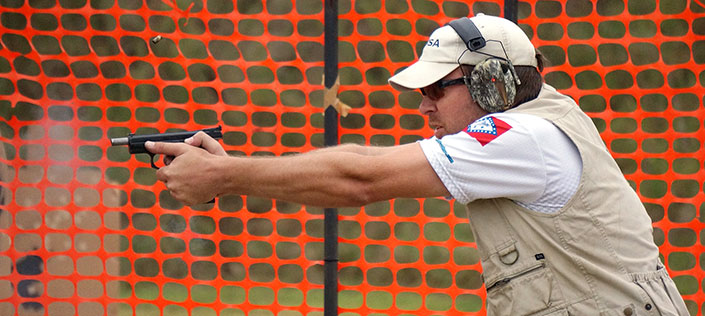
Everything Else
There are plenty of other action-shooting sports out there. What I’ve tried to accomplish is to give you a 10,000-foot view of what’s available to the shooter if you want to get started. In addition to the aforementioned sports, there is Steel Challenge, owned by USPSA and the fastest shooting sport on earth; ICORE, a league dedicated to revolver shooters only; NRA Action Pistol, which hosts its incredible national championship every year in Missouri called the Bianchi Cup; and numerous wildcat (also known as “outlaw”), one-off and unsanctioned matches all over the country.
The point of all of this? Competition is fun, and it’s incredibly easy to get started. Look at it this way: shooting is fun. Shooting fast is even more fun. Running around on a sunny day shooting guns with your friends and trying to beat each other’s scores? You’d be hard-pressed to find a better way to spend a day than that.
For more information:
USPSA: uspsa.org
IDPA: idpa.com
3-Gun Nation: 3gunnation.com















